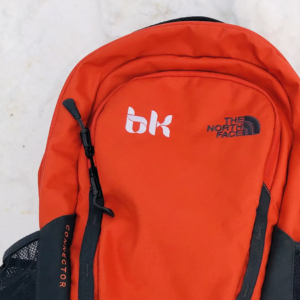5 Methods to Measure & Maximize Your Seasonal Sales
If you’ve ever tried selling Christmas trees in July, then you’re familiar with the importance of seasonality and lead generation.

(Also, anybody need a Christmas tree?)
Time of year can have a huge impact on your lead flow & sales volume. Depending on your business, it might seem like some months the sales keep rolling in, while other months sales move at a crawl.
If time of year plays a big role in your product or service, it’s important to understand the effect that seasonality has on your company’s lead volume.
This is essential to making good business decisions that will put your company in a position to succeed. And not just during your busy months, but all year long.
Here’s the lowdown on how you can analyze the effect of seasonality on your company, and how to take advantage of the high and low seasons to see more sales year-round.
How Seasonality Can Affect Your Business
Seasonality all depends on your product or service. Some companies will experience very little seasonality, while others will have strong periods of feast or famine — and may even close shop during certain months of the year.
Even if your business isn’t very seasonal, you’re liable to see an effect from some of the big milestones each year.
The holiday season in December, for example, is usually a huge sales period for retailers and ecommerce companies.
And if you sell any sort of B2C product or service, you probably know that Black Friday and Cyber Monday are a huge time for sales.
In 2017, Americans spent $19.62 billion during the 5 days from Thanksgiving through Cyber Monday.
Here are 4 specific types of businesses that are most affected by seasonality:
1. Companies Tied to a Type of Weather
Some industries like landscaping, snow plowing, or HVAC depend on certain weather to flourish. Sales for these industries varies heavily depending on what the weather’s like.
But keep in mind this also depends on your area. If you’re a landscaper in L.A. or a snow plower in Anchorage, you’ll probably get more consistent business than someone living in Iowa.
2. Companies Tied to a Holiday
We’ve already mentioned that the holiday season between Thanksgiving and Christmas is a big sales period for most retailers.
But some businesses are tied more directly to a holiday — like Valentine’s Day for florists, or Halloween for costume manufacturers. In this case, seasonal effects are liable to be consistent and predictable every year.
3. Companies Tied to a Calendar Date
For other businesses, sales will spike on certain dates — such as the start of a new calendar year. Industries like insurance feature annual enrollment periods that can cause a spike in sign-ups.
Fitness centers are another example of predictable calendar-related sales. People have a tendency to join gyms as a result of New Year’s resolutions, which is why fitness membership enrollment is 50% higher in January than in other months.
4. Companies Tied to Weather-Related Travel
Certain times of the year are popular for travel. And that can spark a lot of business for travel and tourist-fueled businesses.
Heavy travel seasons also help boost outdoor leisure activities like skiing, snorkeling, camping and white-water rafting.
These categories provide a high-level overview of seasonal businesses. But many companies that don’t fit neatly into one of these categories may still experience a seasonal effect.
So how can you figure out if seasonality can affect your business? Here’s how you can use online data to figure that out.
Are You in a Seasonal Business?
There are 2 helpful online tools you can use to measure the seasonal impact on your business: Google Trends, and your own website analytics.
Google Trends
If you’re not sure how seasonality may affect your company’s sales, one way to get a quick snapshot is to use Google Trends.
This handy little tool will show you the search interest for certain keywords over time. For example, here’s the interest over time for the phrase “Christmas tree” in Google for the U.S.:

Yep…definitely should have waited to run that Christmas tree sale in July. Guess you live and learn.
Here’s another example — this is the Google Trends result for “fill swimming pool:”

The results line up with what you’d expect: people are interested in filling their swimming pools in the late spring and summer, when they’re getting ready to use them.
On the other hand, other industries are much steadier throughout the year, like “office furniture:”

Keep in mind, the data you’ll get in Google Trends isn’t perfect. Google doesn’t share the raw level of queries in this report. Instead it shares what they call a query index.
In other words, it won’t tell you the exact demand for a given search query. It’ll just show the overall trend.
Like the stock market, there’s also no guarantee that the future will necessarily follow one year’s trend. If it’s an extra-warm winter, then the seasonal interest in “winter mittens” could be lower than normal.
Keeping that caveat in mind, Google Trends is a helpful way to get a general idea of what your company’s seasonal demand might look like.
Google Analytics
Another place you can go for insights about the seasonal nature of your business is your site’s analytics.
If your website’s been online for at least a few years, and you have Google Analytics installed, you can go back and look at your website’s data over the course of the year.
You’ll get a graph that can tell you a lot about how your traffic and sales vary from season to season.
For example, the analytics account for a small landscaping company in rural Illinois shows that it does most of its business in mid-spring:

Using your own personal website analytics gives you insight into how seasonality has affected your company in the past. And when you combine this data with relevant trend information from Google Trends, you can start to get a well-rounded picture of the seasonal variations in your industry.
Digital Marketing Strategies to Leverage Seasonal Changes
If you discover that you’re in a seasonal business, there are a few strategies you can use to help take advantage of the ebbs and flows in your business.
As your digital marketing connoisseur, here are our top recommendations:
Create a Holiday Calendar
If there’s a busy period in your company, make sure you take maximum advantage of it. One way to do this is to create a calendar so you can be fully prepared when the leads start coming in around the same time every year.
For example, many companies start gearing up for Black Friday as early as September by doing the following:
- Hiring temporary staff to handle the rush
- Creating marketing assets like ads & emails
- Deciding what sales & promotions to offer
- Taking stock of store inventory
- Updating web pages as needed
Work with your marketing team to agree on a gameplan based around calendar ahead of time to make sure everyone knows when each task must be completed, so you can take full advantage of the busy period ahead.
It’s best to prepare in advance so that when the seasonal rush happens, you have the free time necessary to address any new emergencies or opportunities.
And when you create your calendar, keep in mind that the actual sales cycle can begin or end earlier or later than the busy season itself.
Many landscaping companies don’t begin advertising until after the last frost in mid-May. But data shows that by this time, interest is already decreasing:

Smart landscaping companies will begin their advertising efforts before May, while people are still deciding which company to hire for the summer.
Deliver a Consistent Brand Experience Across All Marketing Channels
To get the most from your seasonal marketing, don’t focus on just one marketing channel.
You’ll get the best results if you can deliver a consistent experience across all customer touchpoints including blog posts, email blasts, and social media.
Use a seasonal theme when creating online ads and content to help it stand out. Here’s a Facebook video from Starbucks that does a great job of that:
And here’s an example of a banner ad from J. Crew that does the same thing:

Source: http://jcrewaficionada.blogspot.com/2014/12/in-jcrew-stores-online-extra-40-off.html
Whatever marketing message you decide on for your seasonal campaign, just make sure you’re delivering the same message across all channels so customers don’t get confused.
Work on Long-Term Projects During Slow Periods
After the busy season is over, treat yourself and your staff to a drink or four for a job well done. But don’t stay out too late — you’ve still got some follow-up to do.
Your slow season is a great time to work on important long-term projects that got pushed aside while things were busy. This could mean projects like redesigning your website, building up your brand and performing conversion-rate optimization.
By tackling these projects when business is slow, you can ensure that you’ll be well prepared when things pick up again.
Taking Advantage of Your Busy Season
If you want to take advantage of the busy seasons in your business, it’s essential to maximize your online presence to make the most of your digital traffic.
After all, online and ecommerce sales continue to grow year after year as more & more people do their shopping online:

Source: https://www.statista.com/statistics/271449/annual-b2c-e-commerce-sales-in-the-united-states/
Here at BKMedia Group, we have a long history of success with helping companies make the most of their seasonal peaks and valleys as a premier Denver SEO company. We have experience in a number of highly-seasonal industries, including the camping and outdoor adventure industry.
Ready to chat with one of our digital marketing experts about the best seasonal strategy for your company? Contact us for a free digital marketing strategy session >
Other Articles
Navigating the Off-Season: Marketing Strategies for Outdoor, Overlanding, and Camping Brands
The world of outdoor adventure, overlanding, and camping is fueled by the passion for exploration, nature, and the thrill of...
Mastering Black Friday Cyber Monday Campaigns: Strategies for Outdoor Retail Brands
Black Friday Cyber Monday (BFCM) has become a pivotal period for businesses across various industries, and the outdoor retail sector...
Why Outdoor Retailers Must Plan Black Friday Cyber Monday Campaigns Well in Advance
For online retailers in the outdoor industry, the Black Friday Cyber Monday (BFCM) weekend represents a significant sales opportunity. However,...



